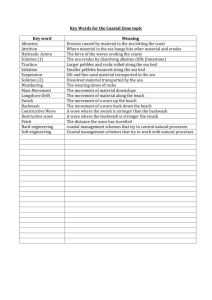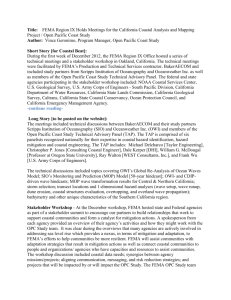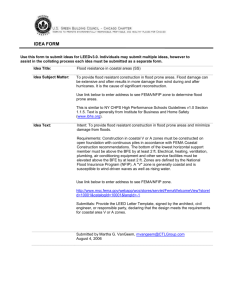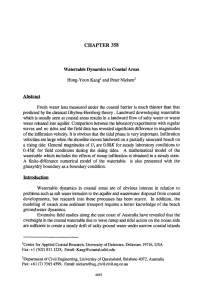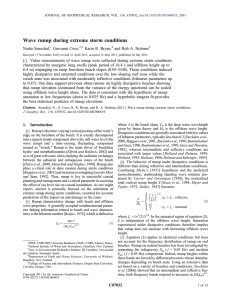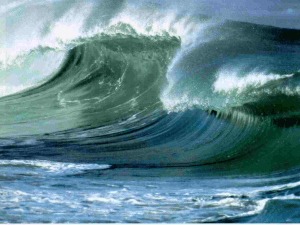Using the Correct Slope in Wave Runup Computations Lisa Winter
advertisement
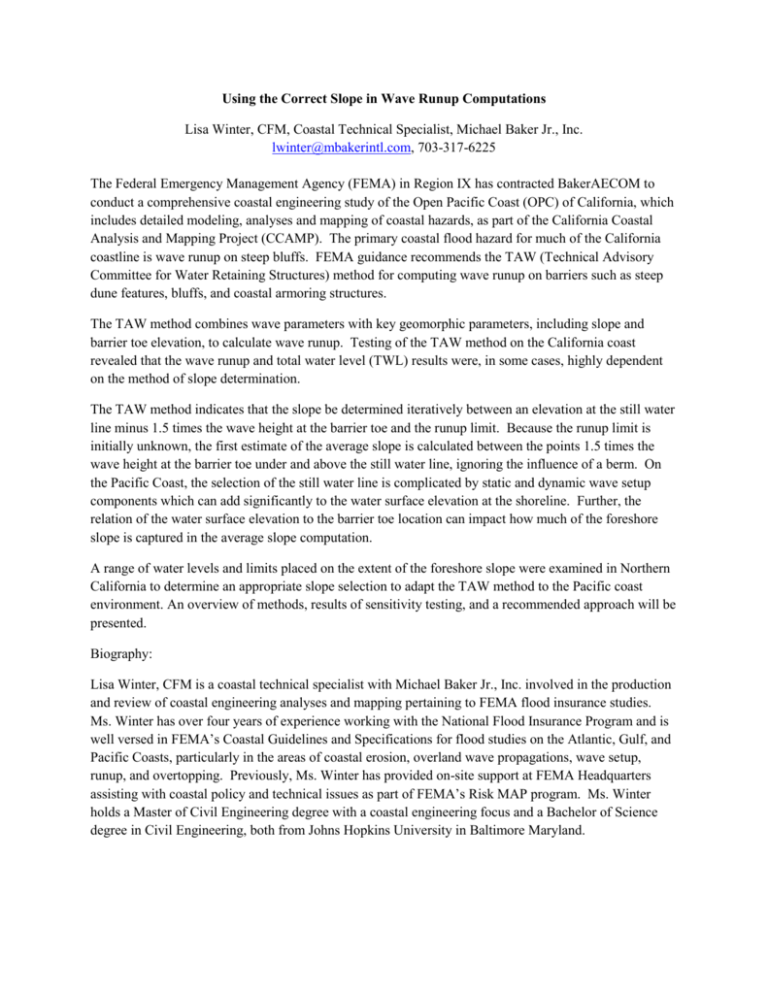
Using the Correct Slope in Wave Runup Computations Lisa Winter, CFM, Coastal Technical Specialist, Michael Baker Jr., Inc. lwinter@mbakerintl.com, 703-317-6225 The Federal Emergency Management Agency (FEMA) in Region IX has contracted BakerAECOM to conduct a comprehensive coastal engineering study of the Open Pacific Coast (OPC) of California, which includes detailed modeling, analyses and mapping of coastal hazards, as part of the California Coastal Analysis and Mapping Project (CCAMP). The primary coastal flood hazard for much of the California coastline is wave runup on steep bluffs. FEMA guidance recommends the TAW (Technical Advisory Committee for Water Retaining Structures) method for computing wave runup on barriers such as steep dune features, bluffs, and coastal armoring structures. The TAW method combines wave parameters with key geomorphic parameters, including slope and barrier toe elevation, to calculate wave runup. Testing of the TAW method on the California coast revealed that the wave runup and total water level (TWL) results were, in some cases, highly dependent on the method of slope determination. The TAW method indicates that the slope be determined iteratively between an elevation at the still water line minus 1.5 times the wave height at the barrier toe and the runup limit. Because the runup limit is initially unknown, the first estimate of the average slope is calculated between the points 1.5 times the wave height at the barrier toe under and above the still water line, ignoring the influence of a berm. On the Pacific Coast, the selection of the still water line is complicated by static and dynamic wave setup components which can add significantly to the water surface elevation at the shoreline. Further, the relation of the water surface elevation to the barrier toe location can impact how much of the foreshore slope is captured in the average slope computation. A range of water levels and limits placed on the extent of the foreshore slope were examined in Northern California to determine an appropriate slope selection to adapt the TAW method to the Pacific coast environment. An overview of methods, results of sensitivity testing, and a recommended approach will be presented. Biography: Lisa Winter, CFM is a coastal technical specialist with Michael Baker Jr., Inc. involved in the production and review of coastal engineering analyses and mapping pertaining to FEMA flood insurance studies. Ms. Winter has over four years of experience working with the National Flood Insurance Program and is well versed in FEMA’s Coastal Guidelines and Specifications for flood studies on the Atlantic, Gulf, and Pacific Coasts, particularly in the areas of coastal erosion, overland wave propagations, wave setup, runup, and overtopping. Previously, Ms. Winter has provided on-site support at FEMA Headquarters assisting with coastal policy and technical issues as part of FEMA’s Risk MAP program. Ms. Winter holds a Master of Civil Engineering degree with a coastal engineering focus and a Bachelor of Science degree in Civil Engineering, both from Johns Hopkins University in Baltimore Maryland.




